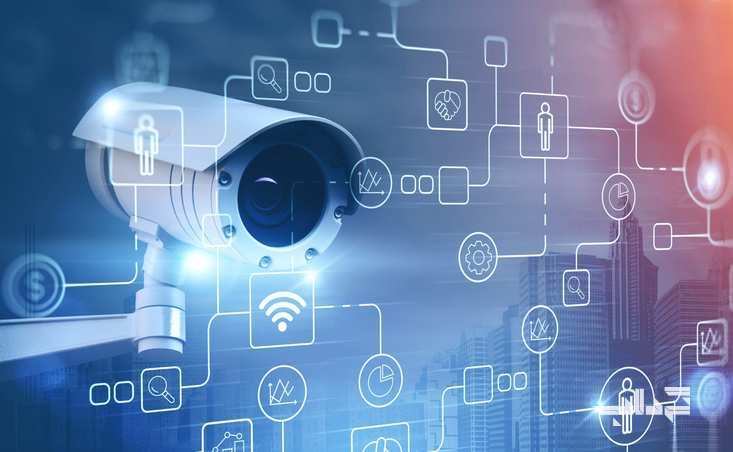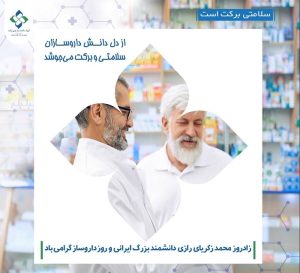
Cybersecurity: Driving Sustainable Health in Digital Age
Barekat Health & Pharmaceutical Group: Over the past decade, the digital revolution has profoundly and pervasively transformed industries worldwide, sparing no domain from its far-reaching impact. The health and pharmaceutical sectors are no exception. From smart drug development to digital prescriptions and clinical data management, the landscape is undergoing fundamental change. However, alongside these advancements, covert yet perilous threats have emerged: cyberattacks, patient data breaches, and tampering with pharmaceutical formulations. The significance of cybersecurity now transcends mere data protection; it directly affects public trust, patient safety, and the credibility of pharmaceutical institutions.
This report aims to demonstrate how cybersecurity has become an integral pillar of the sustainability and reputation of the pharmaceutical industry—and why it must be regarded not as an ancillary cost but as a strategic investment.
Theoretical Foundations: When Health Data Becomes Critical Infrastructure
To grasp the role of cybersecurity in the pharmaceutical sector, one must move beyond a purely technological perspective and engage with theoretical frameworks that broaden our understanding. Our starting point is the theory of Critical Information Infrastructure (CII), which emphasizes that systems such as pharmaceutical supply chains, patient databases, and digital drug distribution platforms are so vital to public health that their disruption could be catastrophic.
Complementing this is the Human Security framework, which deepens the analysis by framing data protection not just as a technical measure, but as a fundamental human right encompassing privacy, health, and secure access to treatment. Emerging concepts such as digital trust, data governance, and AI ethics further enrich this view. These notions underscore that pharmaceutical stakeholders cannot rely solely on strong encryption or expensive firewalls to secure their systems; they must establish structures that foster public trust, transparency, and accountability.
When Medicine Becomes a Target: An Overview of Cyber Threats
In recent years, pharmaceutical companies and major hospitals in leading healthcare markets—especially across Asia—have repeatedly fallen victim to sophisticated cyberattacks. A notable example is the 2020 cyberattack on Dr. Reddy’s Laboratories in India, coinciding with the company’s early human trials of a COVID-19 vaccine.
This attack disrupted the company’s IT infrastructure and temporarily halted critical operations across multiple production units. Such incidents reveal that hackers seek more than financial data; they aim to access novel drug formulas, clinical trial data, genetic patient information, and research & development blueprints.
Given India’s growing role as a global pharmaceutical manufacturing hub, these threats carry geopolitical implications. Malicious actors may pursue not just financial gain but strategic disruption of global drug supply chains or theft of competitive technologies. Consequently, cybersecurity has evolved beyond mere protection of infrastructure to a critical factor in safeguarding national and corporate standing within the global economy.
Artificial Intelligence: Both Sword & Shield in Pharmaceutical Data Security
Artificial Intelligence (AI) is a powerful enabler in the pharmaceutical industry—from drug discovery to disease diagnosis. Yet, in cybersecurity, AI plays a dual and sometimes paradoxical role. On one hand, machine learning algorithms enable detection of suspicious network traffic, attack prediction, and dynamic encryption. On the other, adversaries exploit the same technologies to identify vulnerabilities and automate attacks.
In other words, if pharmaceutical conglomerates do not proactively employ AI for defense, they risk being outmaneuvered by AI-powered threats. Thus, AI deployment in security must be governed by stringent oversight, ethical principles, and transparent standards—not merely as a technological trend, but as a comprehensive strategy for digital resilience.
Data Governance in the Legal Labyrinth: Security Challenges Across Jurisdictions
With the globalization and digitalization of pharmaceutical supply chains, companies face a complex reality: managing data that crosses political borders but is ensnared in inconsistent legal frameworks. For instance, a pharmaceutical group operating simultaneously in China, India, and Europe must navigate conflicting regulations. China’s Data Security Law (DSL) and Personal Information Protection Law (PIPL) impose stringent controls on cross-border data transfer, while Europe’s GDPR emphasizes individual consent, transparency, and digital rights.
This legal misalignment poses a strategic challenge for pharmaceutical holdings. Cross-border transfers of patient data, research information, or drug formulas require precise compliance with domestic laws—failure to do so risks data seizures, heavy fines, or market exclusion. The absence of an international security standard not only hampers process optimization but also fuels legal ambiguities and uneven regulatory pressures.
The solution lies not in retreating from digitalization, but in designing an adaptable, multilayered legal architecture within organizations that harmonizes with diverse national requirements. Only then can cybersecurity transform from a developmental burden into a sustainable competitive advantage.
Policy Recommendations: A Roadmap for Secure Digital Health
-
Develop a Dedicated Cybersecurity Framework for the Pharmaceutical Industry
Pharmaceutical information security demands a specialized framework that surpasses generic IT standards like ISO 27001 or NIST. Identifying critical chains—from R&D through distribution and after-sales service—a localized, industry-specific cybersecurity governance framework must be crafted. Key focus areas include:-
Protection of formulation data and clinical trial results
-
Security of e-prescription and digital pharmacy systems
-
Encryption and isolation of sensitive cloud databases
-
Defense against cyberattacks targeting IoT-enabled pharmaceutical devices
This framework should be institutionalized via an internal cybersecurity governance policy and overseen by a permanent digital security committee comprising experts in IT security, pharmaceutical science, health law, and technology management. Such an arrangement represents a long-term investment to mitigate operational and legal risks.
-
-
Continuous Threat Monitoring Using Localized AI
Machine learning and anomaly detection are increasingly pivotal for predicting and identifying cyber threats. For sensitive sectors like pharma, these tools must be tailored to local cultural contexts, technical languages, data architectures, and prevalent attack vectors. Imported AI models lacking local insights risk false positives or detection gaps.
Partnerships with specialized research centers or security startups can facilitate scalable, compliant AI tools that monitor networks, emails, cloud platforms, and endpoints continuously, capable of automated response upon threat identification. -
Establish a Cyber Crisis Command Center for Healthcare
Rapid, coordinated, multilayered response to complex cyber threats is essential. Pharmaceutical groups should create a dedicated digital crisis room or “Healthcare Cybersecurity Command Center,” pre-modeling attack scenarios such as:-
Unauthorized internal system breaches via unknown malware
-
Patient data encryption from ransomware
-
Leakage through API vulnerabilities
-
Supply chain disruption from attacks on third-party partners
Cross-functional teams from legal, IT, PR, production, and customer service must operate in full coordination. Conducting cyber drills regularly enhances readiness and significantly reduces real-world vulnerability.
-
-
Specialized Cybersecurity Training for Health & Pharma Staff
Globally, over 70% of security breaches stem from human error, such as misclicks or lack of awareness. In pharma, risk intensifies as users—including doctors, pharmacists, and clinical staff—are often non-IT professionals with limited cybersecurity knowledge.
A structured organizational training program should encompass:-
Identification of phishing, malicious emails, and spoofed websites
-
Data protection principles aligned with domestic and international regulations
-
Crisis response exercises for ransomware or data lockout incidents
Advanced training on digital crisis management, risk analysis, and data policy formulation should be provided for managerial and technical staff. Repeated semiannual sessions foster a robust cybersecurity culture.
-
-
International Collaboration to Develop a Global Health Data Security Standard
In the absence of a unified global standard for pharmaceutical data security, companies grapple with conflicting national laws—a challenge underscored during crises like COVID-19. Industry coalitions, professional associations, and partnerships with entities like WHO, ISO, and OECD can drive consensus frameworks.
Such a standard should:-
Define minimum security requirements for international health data exchange
-
Specify interoperable encryption and authentication mechanisms
-
Clarify corporate legal responsibilities for breaches or failures
Engagement in these initiatives mitigates legal risks in multi-market operations and enhances global brand reputation as responsible, leading players.
-
-
Transparency, Accountability, Responsible Disclosure Policies for Data Breaches
Concealing breaches worsens crises and erodes trust among customers and regulators. Companies must establish proactive, transparent incident communication protocols, including:-
Rapid assessment of breach scope and impact
-
Immediate notification to relevant authorities
-
Public disclosure with professionalism and accountability (preferably within 48 hours)
-
Guidance to customers on mitigating personal harm
-
Detailed documentation to prevent recurrence
In today’s digital world, transparent acknowledgment of mistakes signals organizational maturity and integrity. A responsible disclosure policy not only curbs legal and media fallout but also positions the company as trustworthy and accountable.
-
Conclusion
Cybersecurity in the pharmaceutical industry is no longer a peripheral or merely technical issue; it is a critical component of public health integrity and economic sustainability. In a world where drug formulas, patient data, and distribution systems operate digitally, even minor security lapses pose threats to human lives, social trust, and organizational survival.
This report has illustrated that cyber threats extend beyond phishing or ransomware attacks to sophisticated forms such as industrial espionage, supply chain sabotage, and exploitation of international legal gaps. Addressing these challenges demands a holistic, forward-looking, and multilayered approach—from tailored policy frameworks and workforce education to indigenous AI investment and constructive global cooperation.
Ultimately, cybersecurity must be embraced not simply as a cost but as a strategic asset essential for resilience, competitiveness, and upholding the human dignity at the heart of pharmaceutical care. The future of digital health is one where data protection is synonymous with life protection.
-
Barkat Group specialized meeting

-
Safa Appointed as Barekat General Director

-
Barekat Health & Pharmaceutical Group at the 10th Iran Pharma Exhibition

-
Ali Safa visits Sobhan Oncology & Sobhan Darou

-
Pirsalehi & Safa visit Saman Daroo 8 Knowledge-based Company

-
Barekat Managing Director Visits Samen Pharmaceutical Company

-
Honoring Pharmacists’ Day

-
Barekat Top Executives Visiting to Barekat Hospital

